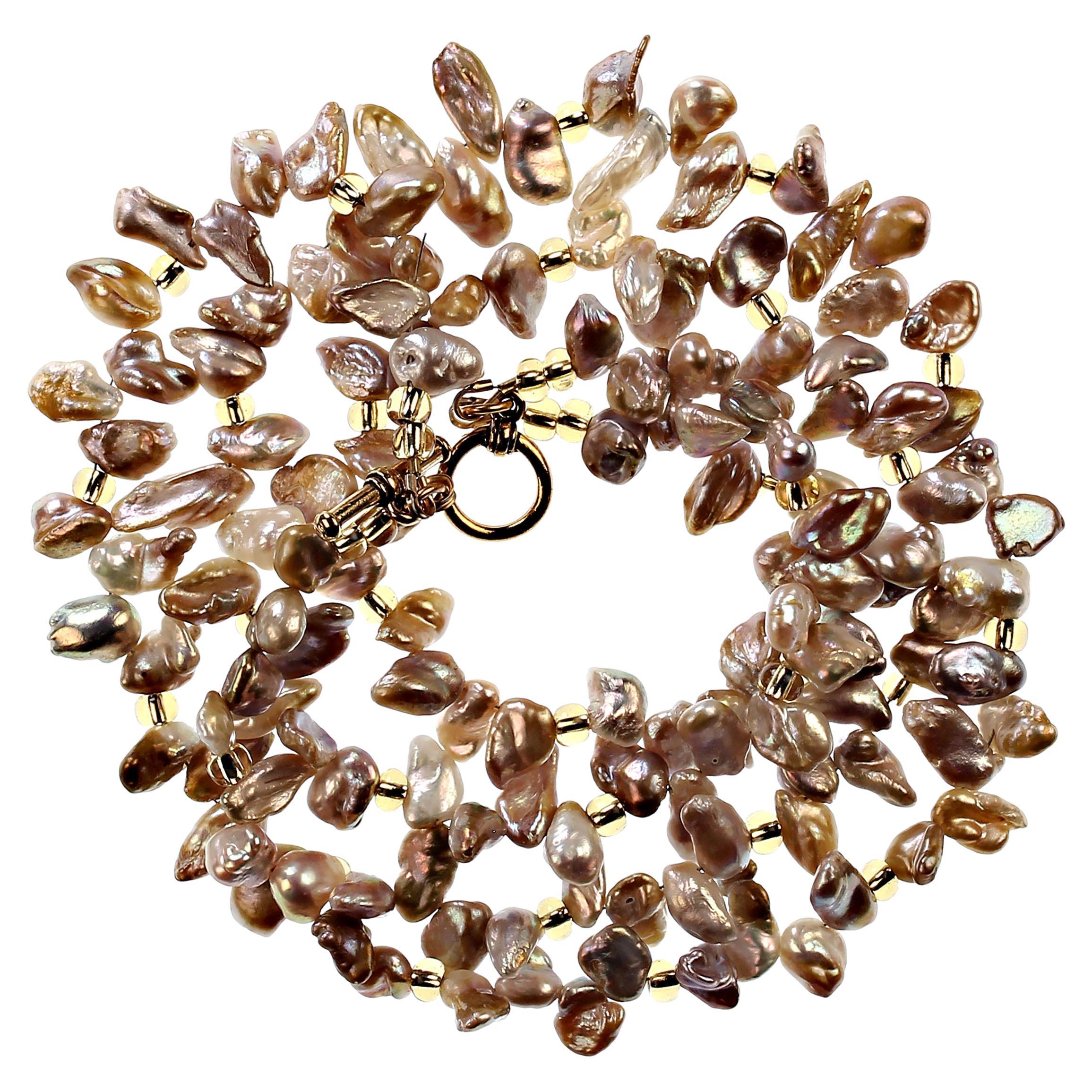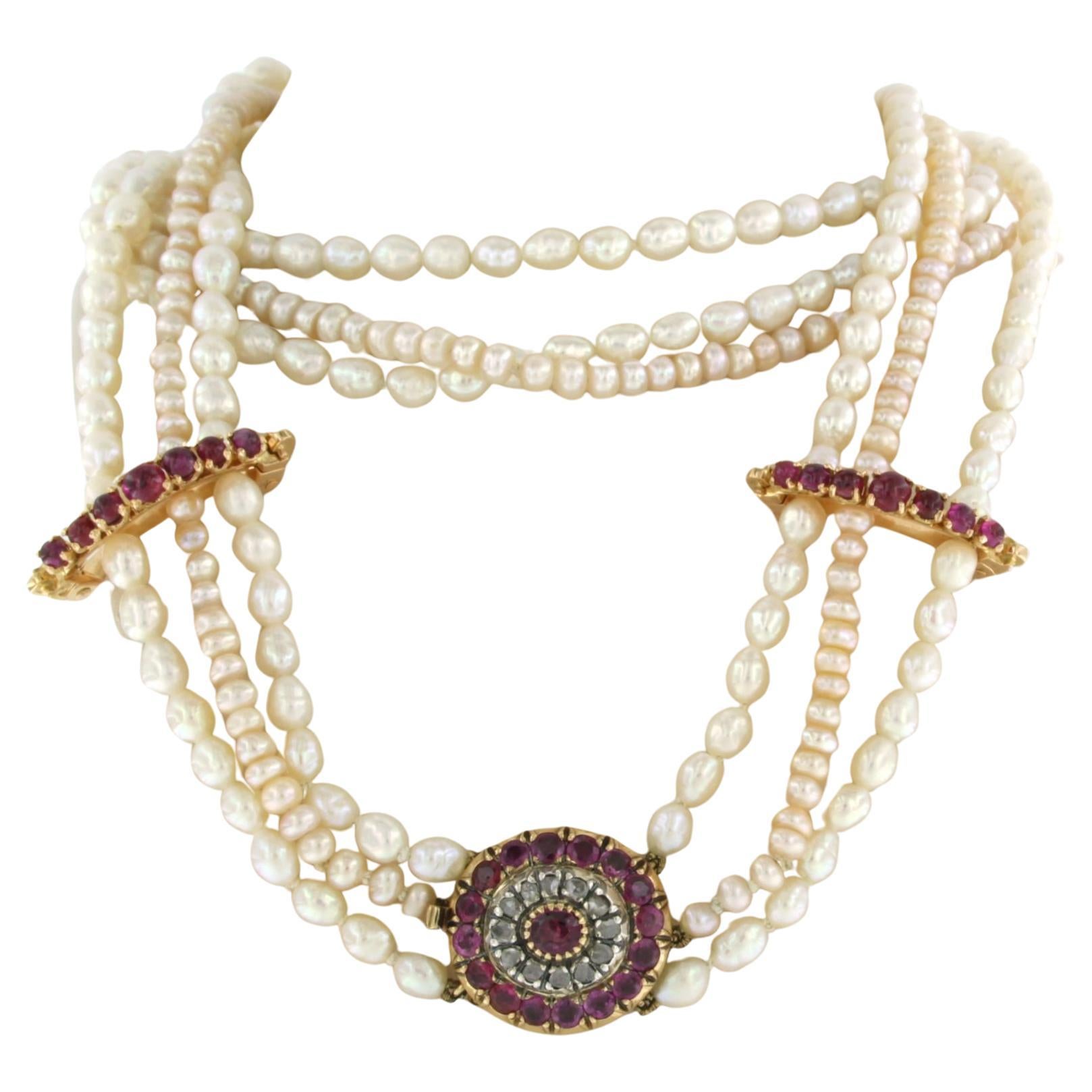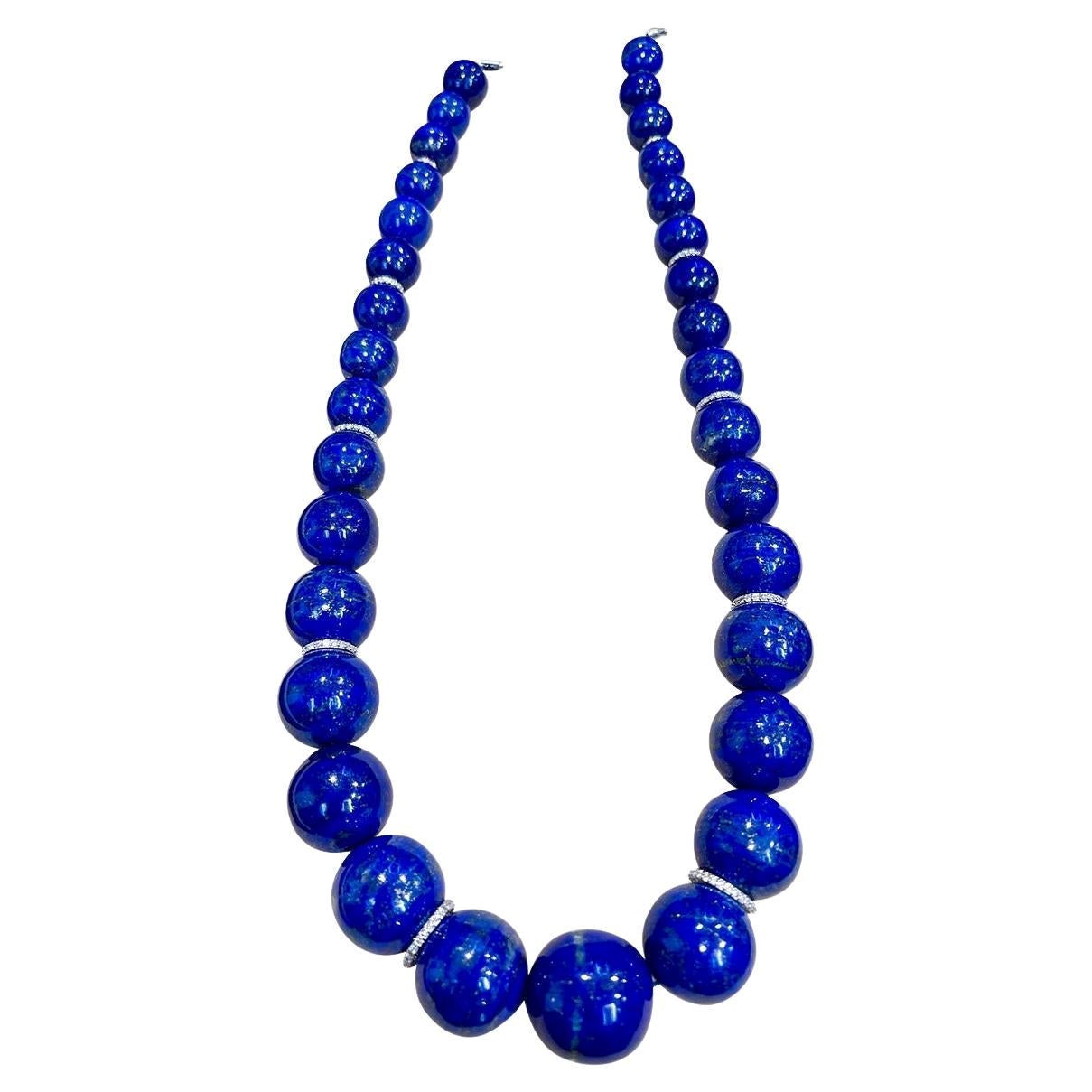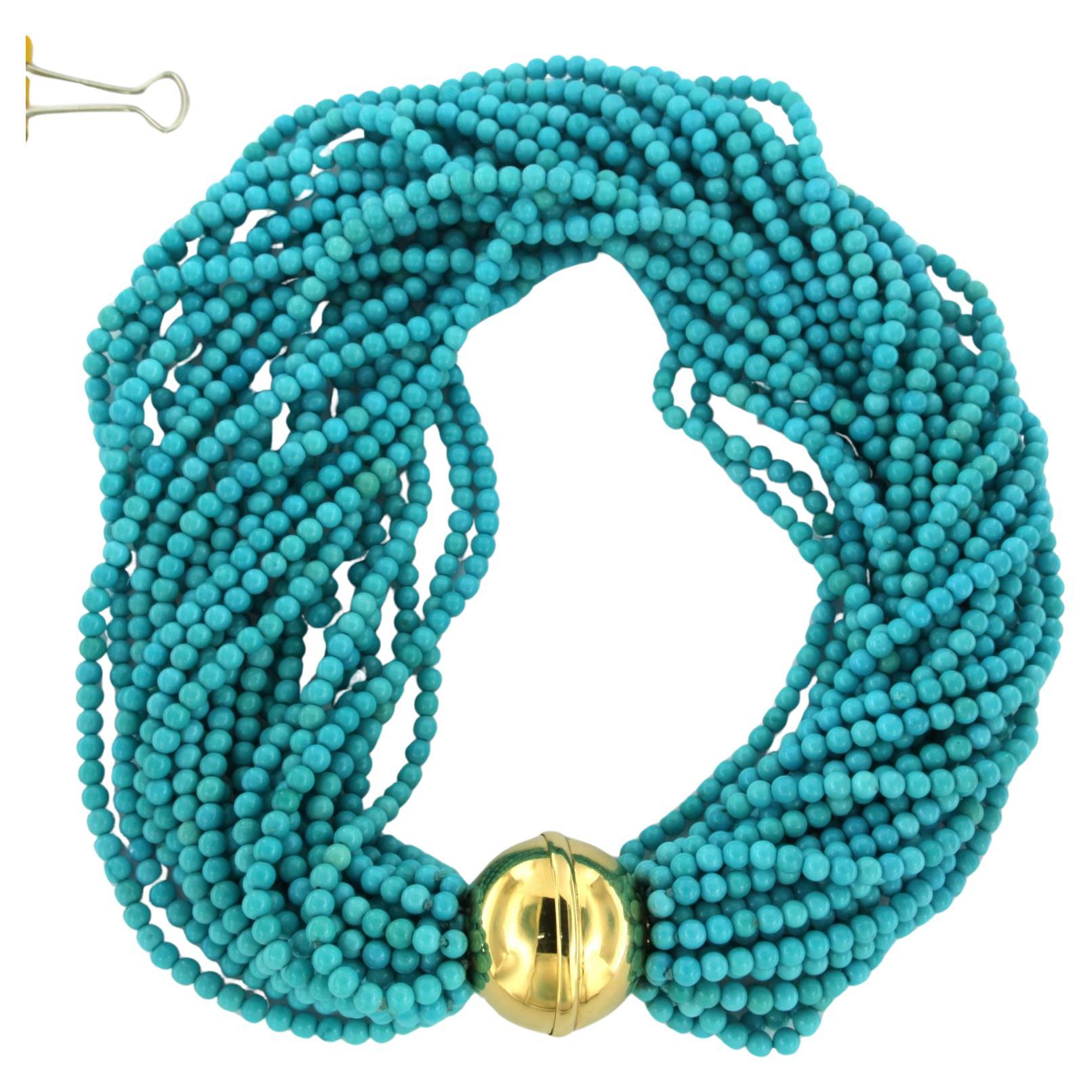Items Similar to 1950s Natural Marbled Jade Graduated Beaded Necklace
Video Loading
Want more images or videos?
Request additional images or videos from the seller
1 of 7
1950s Natural Marbled Jade Graduated Beaded Necklace
About the Item
Graduated Jade meet at either end of a barrel closure to create the imperial beaded necklace.
Jade was considered to be the "imperial gem" and was used to create many utilitarian and ceremonial objects, from indoor decorative items to jade burial suits. From the earliest Chinese dynasties to the present, the jade deposits most used were not only those of Khotan in the Western Chinese province of Xinjiang but other parts of China as well, such as Lantian, Shaanxi. There, white and greenish nephrite jade is found in small quarries and as pebbles and boulders in the rivers flowing from the Kuen-Lun mountain range eastward into the Takla-Makan desert area. The river jade collection is concentrated in the Yarkand, the White Jade (Yurungkash) and Black Jade (Karakash) Rivers. From the Kingdom of Khotan, on the southern leg of the Silk Road, yearly tribute payments consisting of the most precious white jade were made to the Chinese Imperial court and there worked into objets d'art by skilled artisans as jade had a status-value exceeding that of gold or silver. Jade became a favourite material for the crafting of Chinese scholars' objects, such as rests for calligraphy brushes, as well as the mouthpieces of some opium pipes, due to the belief that breathing through jade would bestow longevity upon smokers who used such a pipe.
Jade in Japan was used for jade necklaces and bracelets. It was a symbol of wealth and power. Leaders also used jade in rituals. It is the national stone of Japan. Examples of use in Japan can be traced back to the early Jomon period about 7,000 years ago. XRF analysis results have revealed that all jade used in Japan since the Jomon period is from Itoigawa. The jade culture that blossomed in ancient Japan respected green ones, and jade of other colors was not used. There is a theory that the reason why the meaning is that it was believed that the color of green enables the reproduction of fertility, the life, and the soul of the earth.
- Stone:
- Stone Cut:
- Style:
- Place of Origin:
- Period:
- Date of Manufacture:1950s
- Condition:Wear consistent with age and use. Minor losses.
- Seller Location:Maywood, NJ
- Reference Number:1stDibs: LU3984222163202
About the Seller
New to 1stDibs
Joined in the past six months.
No Reviews Yet
Vetted Seller
These experienced sellers undergo a comprehensive evaluation by our team of in-house experts.
Established in 2024
1stDibs seller since 2024
Typical response time: <1 hour
- ShippingRetrieving quote...Ships From: Maywood, NJ
- Return PolicyA return for this item may be initiated within 3 days of delivery.
Auctions on 1stDibs
Our timed auctions are an opportunity to bid on extraordinary design. We do not charge a Buyer's Premium and shipping is facilitated by 1stDibs and/or the seller. Plus, all auction purchases are covered by our comprehensive Buyer Protection. Learn More
More From This SellerView All
- 1950s Robert Levy 'Originals by Robert' Hand-Blown Glass & Black Spinel NecklaceBy Original by RobertLocated in Maywood, NJHand-blown glass cobalt beads and black spinel beads are hand strung in this statement piece from the Early 1950s. The history of the brand “Original by Robert” dates back to 1942. ...Category
Vintage 1950s American Art Nouveau Beaded Necklaces
MaterialsSpinel, Black Spinel
- 1930s Miriam Haskell Persimmon Dangling Bead Bib Necklace & Earring SetBy Miriam HaskellLocated in Maywood, NJMiriam Haskell jewellery is some of the most prized and beautiful costume jewellery from the 20th century. The intricate designs coupled with their novel colours and materials have ...Category
Vintage 1930s American Art Deco Beaded Necklaces
- Vintage Vendome Glass Seed Bead & Faceted Crystal Multi-Strand NecklaceBy VendomeLocated in Maywood, NJA sea of teal, green, and clear glass seed beads are handstrung, strand after strand, and affixed on either side of a faceted crystal flower with teal and green enameled fixtures. Vendome was established as a subsidiary of Coro to manufacture a superior line of jewelry. The mark was used as early as 1944 on charm bracelets and faux pearl jewelry...Category
Vintage 1960s American Art Nouveau Beaded Necklaces
MaterialsCrystal, Base Metal
- 1970s Matte Robin's Egg Blue Turquoise Oval Bead NecklaceLocated in Maywood, NJThe pastel shades of turquoise have endeared it to many great cultures of antiquity: it has adorned the rulers of Ancient Egypt, the Aztecs (and possibly other Pre-Columbian Mesoamer...Category
Vintage 1970s Southeast Asian Artisan Beaded Necklaces
MaterialsTurquoise
- 1970s Hand-Strung Sea Foam Ombre Lucite & Vintage Crystal NecklaceLocated in Maywood, NJThe start of plastic jewellery was seen in the middle of the 19th century and it became very popular in the 1920's and 30's. Celluloid was the first quality of plastics which was used, then followed Bakelite and Catalin. The invention of Bakelite took place in 1909. Sometime later Catalin was produced. Catalin was easy for mass production and at the same time affordable. Du Pont is the pioneer in the field of Lucite and made it popular in the 1930’s as an alternative to Bakelite which was an expensive grade of plastic. Because of its versatility it became a popular choice for costume jewellery and became even more popular in 1950s for its Jelly Belly Jewellery...Category
Vintage 1970s American Art Deco Beaded Necklaces
MaterialsCrystal, Base Metal
- Late 1950s Napier Art Deco Bakelite Beaded Pendant NecklaceBy NapierLocated in Maywood, NJLustrous Lucite beads meet a striking Bakelite pendant in this signed, Art-Deco Napier Co necklace. A true statement piece, born in the late 1950s, it is sure to dazzle decades later...Category
Vintage 1950s American Art Deco Beaded Necklaces
MaterialsMixed Metal
You May Also Like
- 22 Karat Gold and Apaptite Necklace Yellow GoldBy Pamela FarlandLocated in New York, NYNecklace of luminous tumbled Apatite nuggets on 22 karat gold hand woven chain 18 inches long. Hand made in NYCategory
21st Century and Contemporary American Artist Beaded Necklaces
MaterialsGold, 22k Gold
- Hubei Turquoise Bead Necklace with 14 Karat White Gold Clasp and AccentsLocated in Milford, DEAn exquisite Hubei turquoise bead necklace. This 34-inch, knotted string necklace features a series of round, 14mm, turquoise beads wi...Category
21st Century and Contemporary Beaded Necklaces
MaterialsTurquoise, 14k Gold, White Gold
- Lapis Lazuli Long Rope Bead Necklace, 14 Karat Gold, Diamond and Ruby Gold ClaspLocated in Milford, DEAn exquisite, extra long, genuine lapis lazuli bead necklace. Features a single strand of 10mm lapis lazuli beads accented with 14K gold accents and spac...Category
Late 20th Century Retro Beaded Necklaces
MaterialsRuby, Diamond, Lapis Lazuli, 14k Gold
- Vintage Turquoise Bead Necklace with 14 Karat Yellow Gold ClaspLocated in Milford, DEAn exquisite vintage turquoise bead necklace. This 18-inch, knotted string necklace features a series of round, 10mm, turquoise beads...Category
21st Century and Contemporary American Art Deco Beaded Necklaces
MaterialsTurquoise, 14k Gold, Yellow Gold
- Hubei Turquoise Bead Necklace with Diamond White Gold 14 Karat ClaspLocated in Milford, DEAn exquisite Hubei turquoise bead necklace featuring a single strand of 20mm turquoise beads in gorgeous teal, green, and earth tones....Category
21st Century and Contemporary Beaded Necklaces
MaterialsDiamond, Turquoise, 14k Gold, White Gold
- Vintage Salmon Coral Bead Double Strand Necklace, 14 Karat Yellow Gold ClaspLocated in Milford, DEAn elegant vintage salmon coral bead necklace. Features two strands of coral beads, fastened with a luxurious 14K yellow gold clasp, with a ...Category
20th Century American Retro Beaded Necklaces
MaterialsCoral, 14k Gold, Yellow Gold





